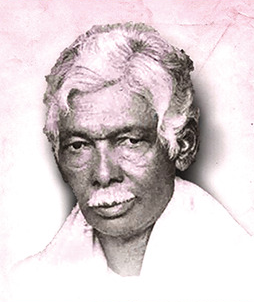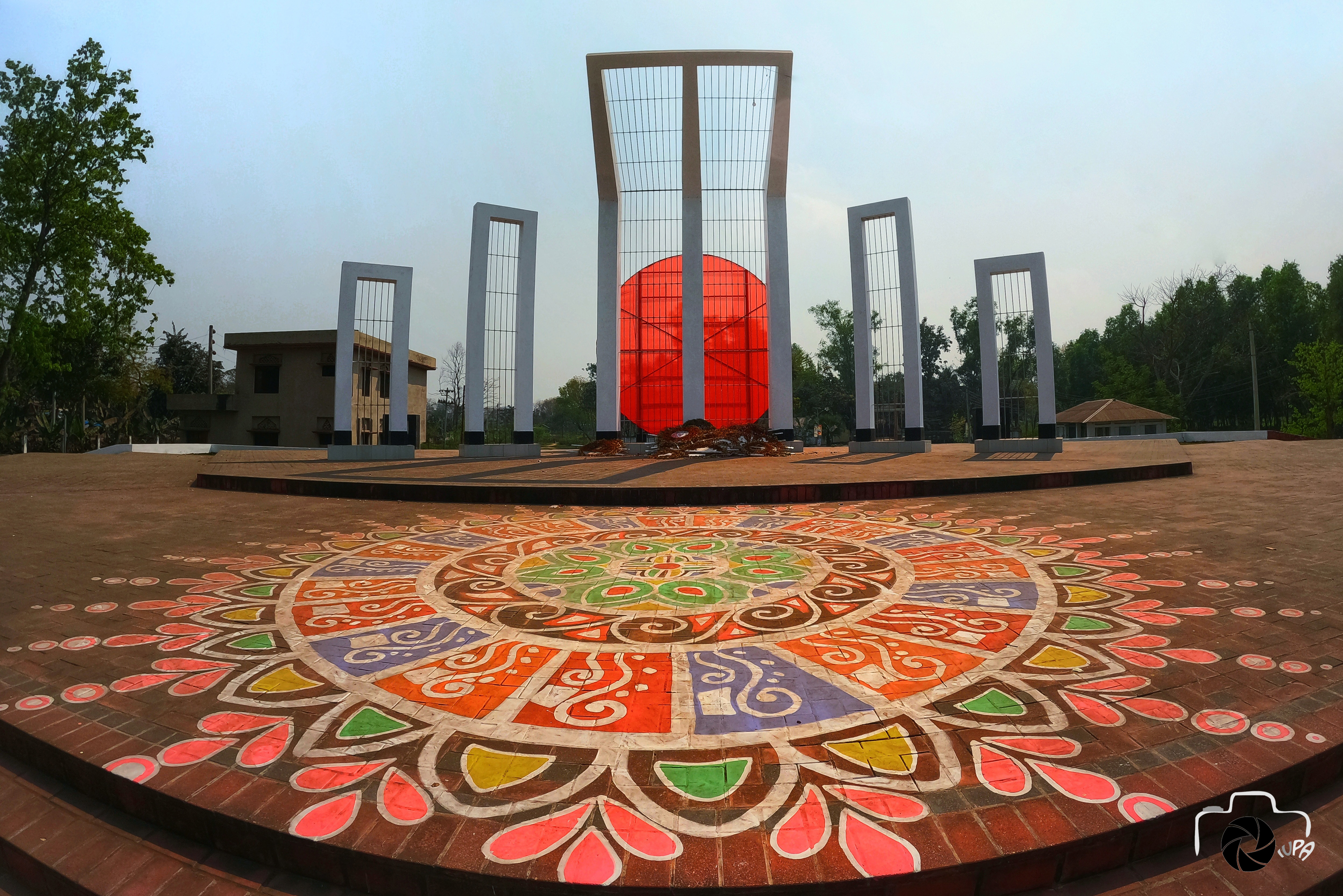|
Santali Script
The Ol Chiki () script, also known as Ol Chemetʼ (, , ), Ol Ciki, Ol, and sometimes as the Santali alphabet is the official writing system for Santali, an Austroasiatic language recognized as an official regional language in India. It was invented by Pandit Raghunath Murmu in 1925. It has 30 letters, the design of which is intended to evoke natural shapes. The script is written from left to right, and has two styles (the print ''Chapa'' style and cursive ''Usara'' style). Unicode does not maintain a distinction between these two, as is typical for print and cursive variants of a script. In both styles, the script is unicameral (that is, it does not have separate sets of uppercase and lowercase letters). History The Ol Chiki script was created in 1925 by Raghunath Murmu for the Santali language, and publicized first in 1939 at a Mayurbhanj State exhibition. Unlike most Indic scripts, Ol Chiki is not an abugida, but is a true alphabet: giving the vowels equal representati ... [...More Info...] [...Related Items...] OR: [Wikipedia] [Google] [Baidu] |
Santali Language
Santali (, , , , ) is a Kherwarian languages, Kherwarian Munda languages, Munda language spoken natively by the Santals, Santal people of South Asia. It is the most widely-spoken language of the Munda subfamily of the Austroasiatic languages, related to Ho language, Ho and Mundari language, Mundari, spoken mainly in the Indian states of Assam, Bihar, Jharkhand, Mizoram, Odisha, Tripura and West Bengal. It is a recognised regional language of India as per the Eighth Schedule to the Constitution of India, Eighth Schedule of the Indian Constitution. It is spoken by around 7.6 million people in India, Bangladesh, Bhutan and Nepal, making it the third most-spoken Austroasiatic languages, Austroasiatic language after Vietnamese language, Vietnamese and Khmer language, Khmer. Santali was a mainly oral language until developments were made by European missionaries to write it in Bengali script, Bengali, Odia script, Odia and Roman scripts. Eventually, the Ol Chiki script was developed ... [...More Info...] [...Related Items...] OR: [Wikipedia] [Google] [Baidu] |
Glottalization
Glottalization is the complete or partial closure of the glottis during the articulation of another sound. Glottalization of vowels and other sonorants is most often realized as creaky voice (partial closure). Glottalization of obstruent consonants usually involves complete closure of the glottis; another way to describe this phenomenon is to say that a glottal stop is made simultaneously with another consonant. In certain cases, the glottal stop can even wholly replace the voiceless consonant. The term 'glottalized' is also used for ejective and implosive consonants; see glottalic consonant for examples. There are two other ways to represent glottalization of sonorants in the IPA: (a) the same way as ejectives, with an apostrophe; or (b) with the under-tilde for creaky voice. For example, the Yapese word for "sick" with a glottalized ''m'' could be transcribed as either or . (In some typefaces, the apostrophe will occur above the m.) Types Glottalization varies along th ... [...More Info...] [...Related Items...] OR: [Wikipedia] [Google] [Baidu] |
Morphophonology
Morphophonology (also morphophonemics or morphonology) is the branch of linguistics that studies the interaction between morphological and phonological or phonetic processes. Its chief focus is the sound changes that take place in morphemes (minimal meaningful units) when they combine to form words. The origins of morphophonology trace back to the early 20th century with foundational works in structural linguistics. Notable contributions include Roman Jakobson's insights into phonological alternations and Chomsky and Halle's ''The Sound Pattern of English'' (1968), which formalized the relationship between phonology and morphology within generative grammar. Subsequent theories, such as Autosegmental Phonology and Optimality Theory, have refined the analysis of morphophonological patterns Morphophonological analysis often involves an attempt to give a series of formal rules or constraints that successfully predict the regular sound changes occurring in the morphemes of a given ... [...More Info...] [...Related Items...] OR: [Wikipedia] [Google] [Baidu] |
Consonant
In articulatory phonetics, a consonant is a speech sound that is articulated with complete or partial closure of the vocal tract, except for the h sound, which is pronounced without any stricture in the vocal tract. Examples are and [b], pronounced with the lips; and [d], pronounced with the front of the tongue; and [g], pronounced with the back of the tongue; , pronounced throughout the vocal tract; , [v], , and [z] pronounced by forcing air through a narrow channel (fricatives); and and , which have air flowing through the nose (nasal consonant, nasals). Most consonants are Pulmonic consonant, pulmonic, using air pressure from the lungs to generate a sound. Very few natural languages are non-pulmonic, making use of Ejective consonant, ejectives, Implosive consonant, implosives, and Click consonant, clicks. Contrasting with consonants are vowels. Since the number of speech sounds in the world's languages is much greater than the number of letters in any one alphabet, Linguis ... [...More Info...] [...Related Items...] OR: [Wikipedia] [Google] [Baidu] |
Odia Alphabet
The Odia script (, also ) is a Brahmic script used to write the Odia language. To a lesser extent, it is also used to write Sanskrit and other regional languages. It is one of the official scripts of the Indian Republic. The script has developed over more than 1000 years from a variant of Siddhaṃ script which was used in Eastern India, where the characteristic top line transformed into a distinct round umbrella shape due to the influence of palm leaf manuscripts and also being influenced by the neighbouring scripts from the Western and Southern regions. Odia is a syllabic alphabet or an abugida wherein all consonants have an inherent vowel embedded within. Diacritics (which can appear above, below, before, or after the consonant they belong to) are used to change the form of the inherent vowel. When vowels appear at the beginning of a syllable, they are written as independent letters. Also, when certain consonants occur together, special conjunct symbols combine the esse ... [...More Info...] [...Related Items...] OR: [Wikipedia] [Google] [Baidu] |
Bengali Alphabet
The Bengali script or Bangla alphabet (, romanized: ''Bāṅlā bôrṇômālā'') is the standard writing system used to write the Bengali language, and has historically been used to write Sanskrit within Bengal. An estimated 300 million people use this syllabic alphabet, which makes it 5th most commonly used writting system in the world. It is the sole national script of Bangladesh and one of the official scripts of India, especifically used in the Indian states of West Bengal, Tripura and the Barak Valley of Assam. The script is also used for the Meitei language in Manipur, defined by the '' Manipur Official Language (Amendment) Act, 2021''. From a classificatory point of view, the Bengali writing system is derived from the Brahmi script. It is written from left to right. It is an abugida, i.e. its vowel graphemes are mainly realised not as independent letters, but as diacritics modifying the vowel inherent in the base letter they are added to. There are no dis ... [...More Info...] [...Related Items...] OR: [Wikipedia] [Google] [Baidu] |
Devanagari
Devanagari ( ; in script: , , ) is an Indic script used in the Indian subcontinent. It is a left-to-right abugida (a type of segmental Writing systems#Segmental systems: alphabets, writing system), based on the ancient ''Brāhmī script, Brāhmī'' script. It is one of the official scripts of India, official scripts of India and Nepal. It was developed in, and was in regular use by, the 8th century CE. It had achieved its modern form by 1000 CE. The Devanāgarī script, composed of 48 primary characters, including 14 vowels and 34 consonants, is the fourth most widely List of writing systems by adoption, adopted writing system in the world, being used for over 120 languages, the most popular of which is Hindi (). The orthography of this script reflects the pronunciation of the language. Unlike the Latin alphabet, the script has no concept of letter case, meaning the script is a unicase, unicameral alphabet. It is written from left to right, has a strong preference for symmetri ... [...More Info...] [...Related Items...] OR: [Wikipedia] [Google] [Baidu] |
Norman Zide
Norman Herbert Zide (May 30, 1928 – February 21, 2023) was an American linguist and specialist in the Munda languages. He was Professor Emeritus at the University of Chicago. He taught Hindi and Urdu at the Department of South Asian Languages & Civilization at the Department of Linguistics of the University of Chicago for four decades and published several books and articles on the subject. However, his greater fame lies in his contributions to the Munda languages and to Austroasiatic linguistics in general. He has also done considerable work as a translator, especially of poetry. In ''The Oxford Anthology of Modern Indian Poetry'', he did or assisted in translations of poetry from both North Indian and Austroasiatic languages. His undergraduate education was at Columbia University where he majored in French. In the 1950s he began to do graduate work in South Asian languages and linguistics. In India, he carried out linguistic fieldwork in many places, but especially in Orissa a ... [...More Info...] [...Related Items...] OR: [Wikipedia] [Google] [Baidu] |
Library Of Congress
The Library of Congress (LOC) is a research library in Washington, D.C., serving as the library and research service for the United States Congress and the ''de facto'' national library of the United States. It also administers Copyright law of the United States, copyright law through the United States Copyright Office, and it houses the Congressional Research Service. Founded in 1800, the Library of Congress is the oldest Cultural policy of the United States, federal cultural institution in the United States. It is housed in three buildings on Capitol Hill, adjacent to the United States Capitol, along with the National Audio-Visual Conservation Center in Culpeper, Virginia, and additional storage facilities at Fort Meade, Fort George G. Meade and Cabin Branch in Hyattsville, Maryland. The library's functions are overseen by the librarian of Congress, and its buildings are maintained by the architect of the Capitol. The LOC is one of the List of largest libraries, largest libra ... [...More Info...] [...Related Items...] OR: [Wikipedia] [Google] [Baidu] |
ALA-LC Romanization
ALA-LC (American Library AssociationLibrary of Congress) is a set of standards for romanization, the representation of text in other writing systems using the Latin script. Applications The system is used to represent bibliographic information by North American libraries and the British Library (for acquisitions since 1975)Searching for Cyrillic items in the catalogues of the British Library: guidelines and transliteration tables and in publications throughout the English-speaking world. The Anglo-American Cataloguing Rules require catalogers to romanize Authority control, access points from their non-Roman originals. However, as the MARC standards have been expanded to allow records containing Unicode characters, many cataloguers ... [...More Info...] [...Related Items...] OR: [Wikipedia] [Google] [Baidu] |
International Phonetic Alphabet
The International Phonetic Alphabet (IPA) is an alphabetic system of phonetic notation based primarily on the Latin script. It was devised by the International Phonetic Association in the late 19th century as a standard written representation for the sounds of speech. The IPA is used by linguists, lexicography, lexicographers, foreign language students and teachers, speech–language pathology, speech–language pathologists, singers, actors, constructed language creators, and translators. The IPA is designed to represent those qualities of speech that are part of lexical item, lexical (and, to a limited extent, prosodic) sounds in oral language: phone (phonetics), phones, Intonation (linguistics), intonation and the separation of syllables. To represent additional qualities of speechsuch as tooth wikt:gnash, gnashing, lisping, and sounds made with a cleft lip and cleft palate, cleft palatean extensions to the International Phonetic Alphabet, extended set of symbols may be used ... [...More Info...] [...Related Items...] OR: [Wikipedia] [Google] [Baidu] |


